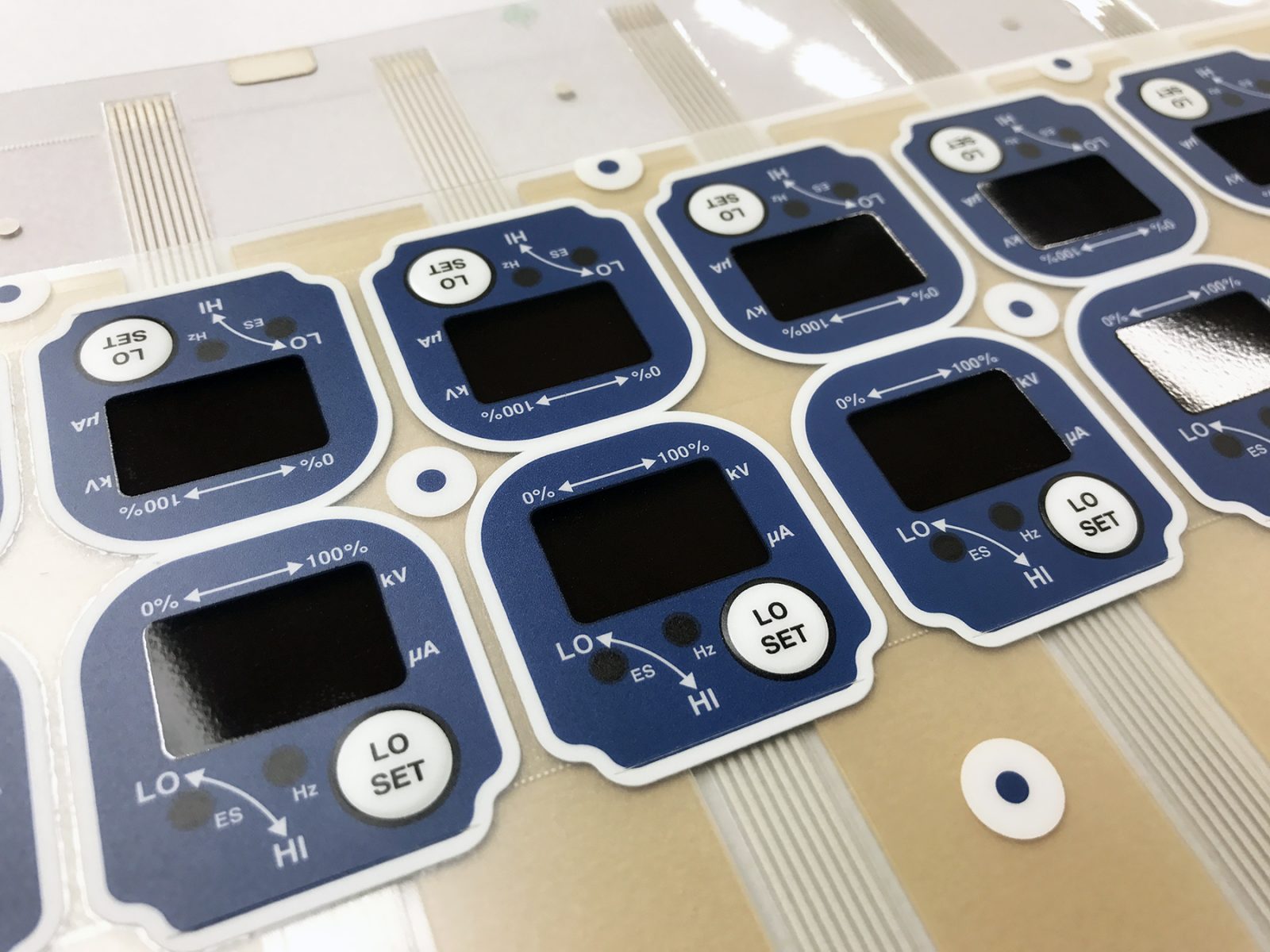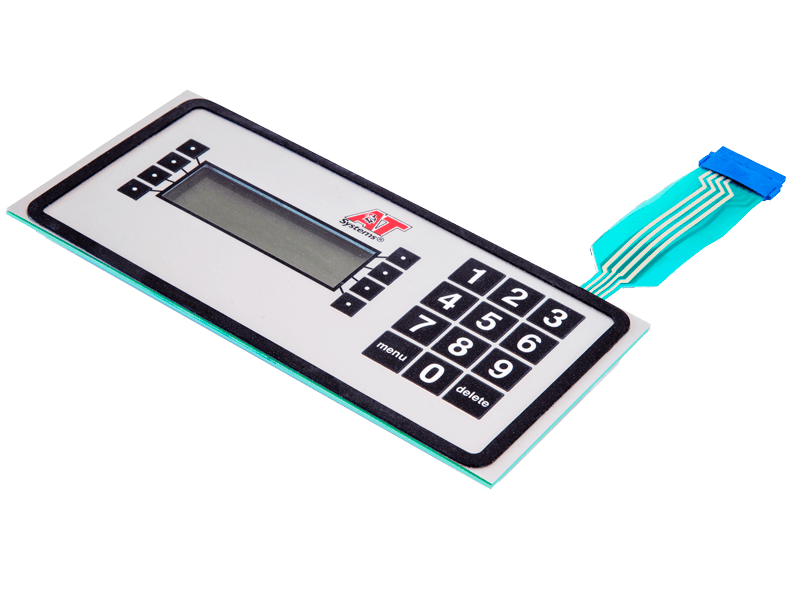A good membrane switch manufacturer offers flexible design options for advanced applications.
A good membrane switch manufacturer offers flexible design options for advanced applications.
Blog Article
Everything About Membrane Change: Understanding Its Style and Performance
When you think concerning the control interfaces in modern tools, membrane switches frequently come to mind. Allow's discover what collections membrane layer changes apart from other control systems.
What Are Membrane Switches?

Their smooth nature makes them simple to clean and immune to dirt and wetness, an important attribute in lots of environments. Membrane layer buttons can likewise be tailored regarding form, dimension, and graphics, enabling makers to create unique interfaces tailored to details items. Plus, they're light-weight and slim, which aids in reducing the total mass of devices. Generally, membrane layer buttons play a considerable role in improving user experience throughout a vast variety of applications.
Exactly How Membrane Switches Over Job
When you push a key on a membrane switch, it triggers an uncomplicated yet reliable system. The top layer, frequently made of adaptable material, lowers onto a conductive layer under it. This action bridges the gap between conductive traces, completing an electric circuit. As quickly as the circuit closes, it sends a signal to the tool's controller, which interprets your input.
You'll observe that the responsive feedback varies based upon the button style, offering either a soft click or a more pronounced reaction. When you launch the trick, the membrane layer go back to its original placement, resuming the circuit and stopping the signal. This process happens nearly instantly, making certain a responsive user experience.
Membrane layer switches are preferred as a result of their longevity and resistance to dust and wetness, making them excellent for various applications, from home home appliances to medical devices. Recognizing this procedure aids you appreciate their extensive usage.
Trick Elements of Membrane Layer Buttons
Understanding the crucial parts of membrane buttons is fundamental for understanding their performance and layout. The protective layer guards versus environmental aspects and put on, prolonging the button's life expectancy. By recognizing these parts, you'll obtain insight into how membrane layer switches over operate and their importance in numerous applications.
Products Used in Membrane Layer Switch Over Design
The performance and durability of membrane switches over greatly depend upon the materials utilized in their design. You commonly experience polyester and polycarbonate as primary substratums due to their exceptional toughness and flexibility. These materials stand up to scratches and chemicals, making them perfect for requiring atmospheres.
The conductive layers commonly make use of silver or carbon, chosen for their reliability and conductivity. membrane switch manufacturer. Silver gives remarkable performance, while carbon is an affordable choice. For the overlay, you may consider a matte or glossy surface, relying on your aesthetic needs and individual experience
Adhesives play an essential function as well; they bond layers securely and ensure long life. Ensure to pick adhesives that hold up against ecological aspects like temperature level and humidity. Ultimately, do not ignore the significance of a good printing method for graphics, as it boosts both capability and aesthetic appeal. Choosing the best products will ensure your membrane switch stands the test of time.
Style Factors To Consider for Membrane Layer Buttons
While designing membrane switches, it's vital to consider numerous elements that affect their capability and individual experience. Begin by concentrating on the format and switch size; make particular they're user-friendly and very easy to navigate. Take into consideration the responsive responses you wish to provide-- will customers require a noticeable click or a softer touch? Furthermore, think of the products you'll use, as they'll influence Going Here toughness and appearances.
Don't forget the graphic style; clear labeling and color comparison are substantial for presence. Verify your style suits environmental elements, like dampness or temperature next page variants, which can impact efficiency. Ultimately, remember the significance of testing prototypes with genuine customers to gather comments and make required adjustments. This repetitive procedure helps you refine the layout, confirming it meets both functional and visual demands successfully. By meticulously considering these elements, you'll develop a membrane layer button that enhances use and satisfaction.
Applications of Membrane Switches
Membrane layer switches are flexible parts located in various applications, from industrial devices to customer electronic devices. You'll see their influence in equipments that call for durable user interfaces and in devices that profit from sleek layouts. Comprehending these applications aids you value the performance and practicality of membrane layer switches in day-to-day modern technology.
Industrial Tools Use
When you're looking to boost the functionality of industrial equipment, membrane switches supply a trusted option that combines resilience with easy to use design. These switches are excellent for harsh settings, providing resistance to dirt, wetness, and chemicals. Welcome membrane buttons to simplify your procedures and improve overall performance.
Customer Electronics Assimilation
In the domain name of consumer electronic devices, membrane layer buttons play a crucial duty in boosting customer interaction and tool capability. Membrane layer switches also assure sturdiness and resistance to dirt and wetness, expanding the life-span of your electronics. By picking membrane switches, you boost not just the functionality however also the design of your devices, making everyday communications smooth and satisfying.
Advantages and Drawbacks of Membrane Layer Buttons
While membrane buttons offer an array of benefits, they also come with some drawbacks that you should think about. One substantial visit this site right here advantage is their small design, making them suitable for space-constrained applications.

However, there are disadvantages. Membrane layer buttons can have a much shorter lifespan contrasted to mechanical switches, especially under hefty use. They can also be much less tactile, which could impact individual comments during procedure. Moreover, if harmed, fixing them can be difficult and usually needs full substitute. Ultimately, their sensitivity to severe temperatures and ecological conditions might limit their efficiency in certain setups. Stabilizing these benefits and drawbacks will aid you figure out if membrane switches are the ideal fit for your job.
Regularly Asked Inquiries
How Much Time Do Membrane Layer Switches Normally Last?
Membrane switches over generally last between 5 to 10 years, relying on usage and ecological problems. You'll desire to assess factors like wear, direct exposure to dampness, and temperature changes to gauge their long life successfully.
Can Membrane Layer Switches Be Customized for Details Styles?
Yes, you can personalize membrane layer switches to fit certain styles (membrane switch manufacturer). You'll have the flexibility to pick shades, forms, and formats that match your project's needs, guaranteeing they mix perfectly with your total visual
What Is the Cost Array for Membrane Change Production?
The price array for membrane layer button production typically falls between $1 and $10 each, depending upon factors like design intricacy, quantity, and products. You can obtain quotes from producers to locate the most effective alternative.

Are Membrane Layer Switches Water Resistant or Resistant?
Membrane switches can be developed to be water-proof or resistant, relying on products made use of and building and construction methods. If you need them for wet atmospheres, guarantee you specify those needs throughout the layout process.
How Do Membrane Changes Compare to Typical Switches?
Membrane buttons are usually thinner and more adaptable than conventional switches, providing a streamlined style. They're frequently easier to cleanse and incorporate, however might not give the responsive comments you're made use of to with mechanical alternatives.
Conclusion

Report this page